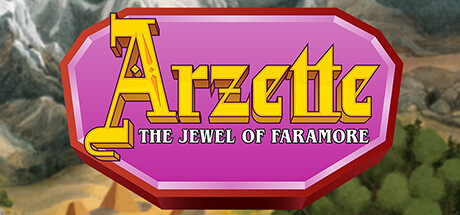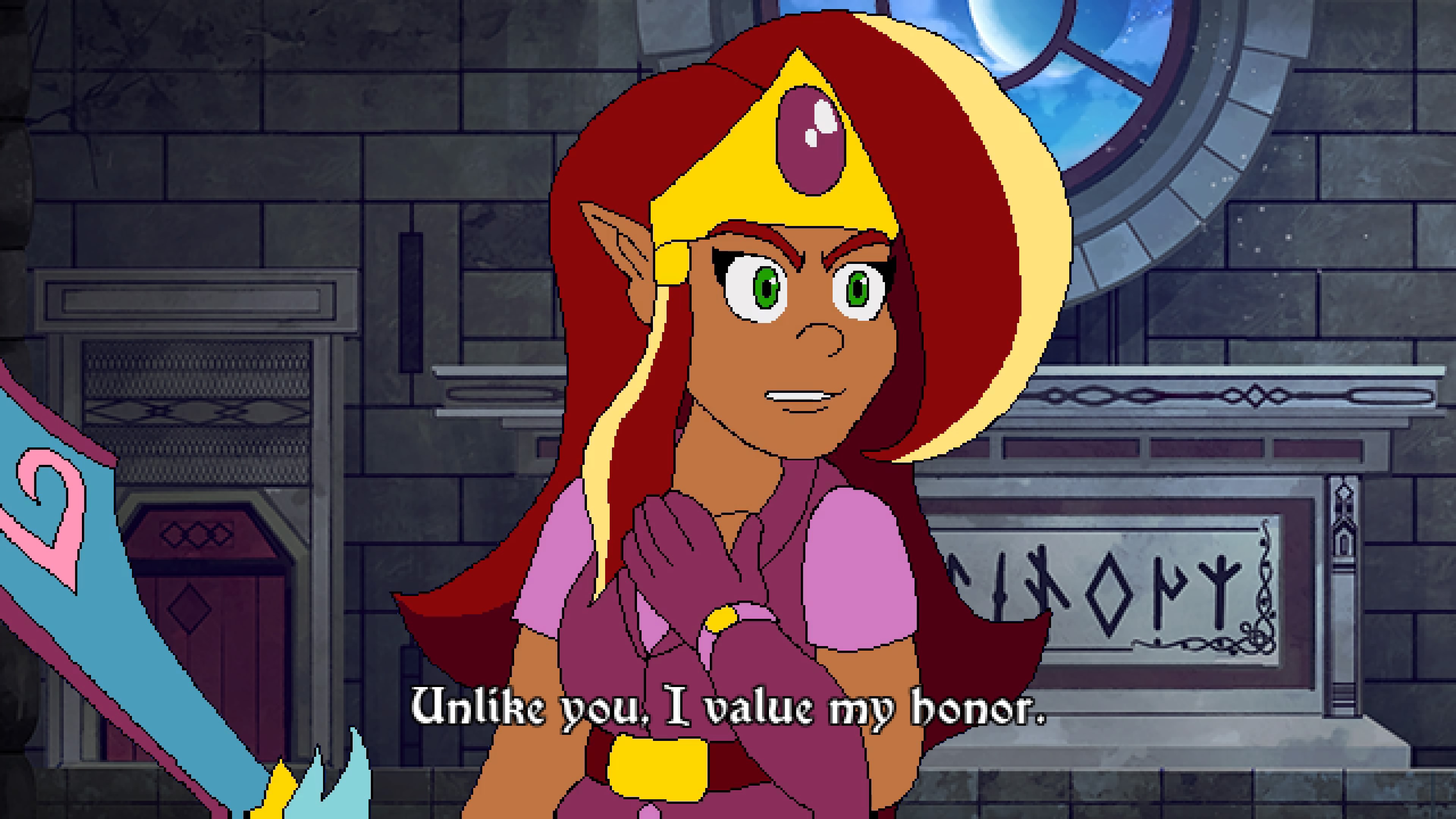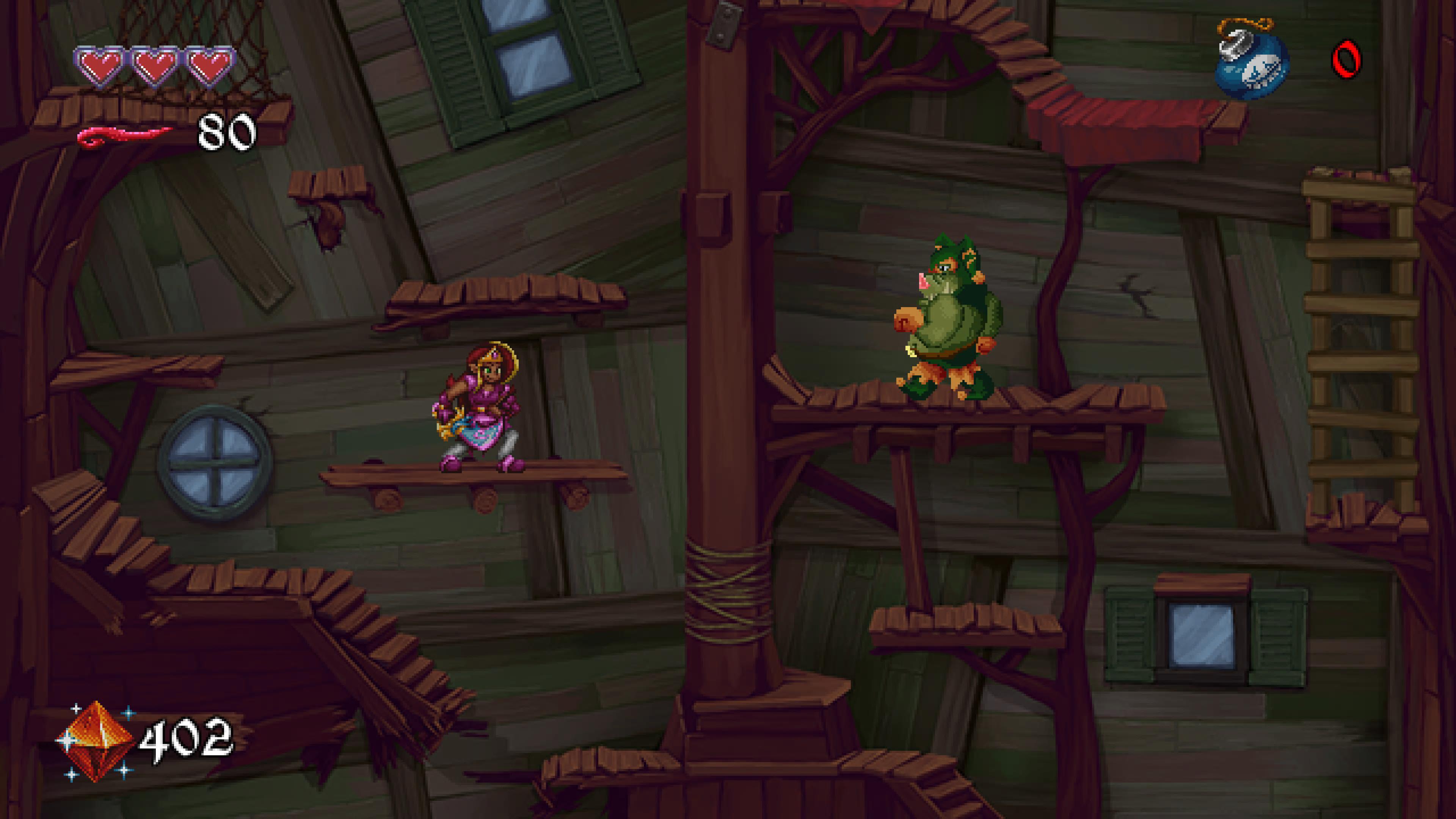GAME CLEAR No. 180 -- Arzette: The Jewel of Faramore
video games game clear seedy eye software limited run games ps5 playstationArzette: The Jewel of Faramore (2024, Multiplatform)
Developer: Seedy Eye Software
Publisher: Limited Run Games
Clear Version: PS5
Clear Platform: PS5
Clear Date: 7/15/24

| Why should I care? |
|---|
| Arzette, with the unlikeliest of inspirations, is a tribute done right and a lovely action-platformer. |
Compact Disc-Iterative
When I saw that somebody was making an original game based on the Zelda CD-i titles, I was sold basically immediately.
“But Clay,” you may be thinking, “didn’t you just say earlier this year that Bomb Rush Cyberfunk was mid largely because of the ways it tries to be just like another game?”
Well, yes. I did say that. In making this purchase, I wondered if Arzette would bother me in a similar way, but I think the fact that it was inspired by something bad with an ostensible mission to make something good led me to believe it might be different. I’m happy to say I found it quite different and quite enjoyable indeed.
But, in case you don’t know what the Zelda CD-i titles are, let me take a step back. The short version is that in the early ’90s, Nintendo entered tentative deals with Sony and then Philips to develop a CD add-on for the Super Nintendo. They ultimately backed out of both of them. Sony’s R&D resulted in a little-known console called the PlayStation, while Philips managed to secure a licensing deal with Nintendo for a handful of Zelda and Mario characters as compensation for their withdrawal from the project. This timed up auspiciously with their desire to enter the entertainment software space with the Compact Disc-Interactive format that they had been developing — as it happens — with Sony. See, “CD-i” is not the name of a console and does not refer to a specific piece of hardware. It is instead an optical disc format that, fittingly, can be used to play interactive software. Philips did develop many first-party players, but the technology was also licensable, so companies like Magnavox did as well.
In any case, to bolster sales and prove the concept, I reckon they figured Nintendo’s world-famous characters could provide them some helpful name recognition. They cranked out a handful of games under the license, including Link: The Faces of Evil, Zelda: The Wand of Gamelon, and Hotel Mario. These received mixed reviews at the time of their release and were largely ignored by virtue of their existence on an expensive and quickly abandoned platform. However, their bizarrely animated cutscenes and mediocre voice acting (with a handful of especially goofy line reads) made them the perfect fodder for the YouTube Poop phenomenon that would arrive in the coming decade (here’s my favorite of them, for what it’s worth).
When that happened, their infamy skyrocketed. They were also easy material for classic game reviewers like the Angry Video Game Nerd, of course. And so their canonical status as woeful games with weird animation was established despite a much more tepid response from contemporary critics. Countless more people were exposed to bits and pieces of the games most worthy of ridicule than ever actually played them themselves. I was no exception, but as the years have worn on, I’ve tried to be more wary of these established narratives about old games.

So, back to the top. I saw some guy was making a game inspired by the Zelda CD-i titles, and I thought maybe he could wring something good out of the games I understood to be bad. And he did, Arzette rules.
That “some guy,” it turns out, was Seth Fulkerson (also known as “Dopply” online). Fulkerson had previously ported the two Zelda CD-i titles to Linux and Windows in 2020, a passion project that I can only imagine is at least partially a result of thinking the games have redeeming qualities beyond their meme-ability. His decision to make his own game based on them would further suggest that.
Teaming up with some Digital Foundry guys to help design and make the game and Limited Run for publishing, Fulkerson created a game that is immediately recognizable as a copycat of its inspirations. Perhaps most critical in making this clear was to get the cutscenes right, and the attention to detail there suggests that Fulkerson and Co. knew that. Arzette’s cutscenes purportedly use the exact same color palette and FPS constraints of the CD-i games, and they are similarly over-the-top and weird with framing and zoom-in. You know exactly what they’re riffing on instantaneously, and the team was was wise to know this was not something that needed to be changed. The silly animations may have seemed out-of-place for Zelda or Mario, but they’re part of the fun here, and Seedy Eye did a splendid job capturing their charming strangeness.
Its story, too, is similar. A wizard informs the royal family that the evil Daimur has apparently escaped the book Princess Arzette sealed him in a decade ago. The eponymous Jewel of Faramore provided the power to seal him therein in the first place, and now Daimur has separated it into five fragments that he has entrusted to his toughest underlings. Arzette sets out to recover the fragments and deal with Daimur again, this time hopefully for good.
It draws a lot from the plot and setting of Link: The Faces of Evil, but it can get away with that in a way that Link’s game could not. Owing, I imagine, to the limits of the licensing deal worked out with Nintendo, the Zelda CD-i games do not take place in Hyrule. They instead involve Link and Zelda going on quests to save other regions known as Koridai and Gamelon respectively. They also feature an absolute bevvy of original characters with no ties to the source games. These differences were natural (and understandable) objects of criticism for the games, but Arzette is bound by no such hallowed canon. In fact, copying some of the plot devices and filling its world with a bunch of weirdos is faithful to the material it’s based on, so it works. Critically, it also helps that the game’s plot ultimately subverts expectations and makes an effort to set the would-be franchise on its own course should a sequel ever happen.
The gameplay takes a similar “lean in, but improve” approach. Fundamentally, it’s a side-scrolling, jump-and-slash adventure across a dozenish levels. It involves getting new weapons and powerups that may be useful in future or past levels (I will not refer to any bounty/vampire hunters to describe this concept) in order to ultimately gather the aforementioned jewel fragments with which to take on the final boss. Side quests are peppered about (and given by weird little guys with their fully voice acted animated cutscenes) that are not strictly required but do surely award items that will help Arzette considerably on her way. It’s a pretty standard concept, but the Zelda games mostly failed in the implementation thereof. Arzette, fortunately, avoids the issues that plagued those games nearly every step of the way.
For example, Arzette is armed with a similarly stubby sword as Link, and she also has a similarly tiny allocation of health, especially in the early going. This is alleviated, though, by how tightly she controls. The CD-i originals were criticized harshly for their finicky controls (not helped by the questionable and varied input methods available to owners of CD-i players). Meanwhile, I think it feels just great to run around and slice baddies as Arzette, especially as upgrades start to make her more of a force to be reckoned with.

Similarly, the much-maligned dark caves of the CD-i games return. They are best navigated with a lantern (with its requisite consumable oil), but Arzette is mercifully offered a small halo of light immediately surrounding her, which makes caves navigable in a pinch. No such concession was offered in the CD-i games. Navigation concerns outside the caves are alleviated as well. The Zelda games were criticized for having side-scrolling stages whose walkable paths and platform sizes were ambiguous because of the more realistic, fully hand-drawn look they went for. Arzette keeps the aesthetic vibes of those stages effectively while also making it clear what terrain is actually part of the platforming environment and what is not.
Additionally, while certain stages can be a bit punishing — especially before you get health upgrades — you always respawn with full health on the part of the stage you died in. The original game had finite lives, resulting in frustrating Games Over.
I also would be remiss to not remark on the outstanding soundtrack composed by Jake Silverman (a.k.a. Button Masher). It’s difficult for me to describe exactly why, but it just perfectly captures the vibe the game is going for of an early-90’s CD-based game, and I’m glad they were able to get a talent like Silverman to do it. I’m less familiar with how it compares to the Zelda soundtracks than I am some of the other aspects of the game, but it’s an excellent complement to the action regardless.
In any case, the myriad improvements to the game make for something that is great fun to play and show that there was criticality in each decision that was made for a game that was designed to adhere rather strongly to a singular source of inspiration. It demonstrates a respect for what came before while avoiding the pitfalls of an overly faithful tribute. It also suggests that maybe those Zelda titles weren’t so far off from being something pretty cool themselves.
The game also doesn’t overstay its welcome. All told, the thrills of Arzette lasted me between 3 and 4 hours, which was just what the doctor ordered after the 81-hour gauntlet that was Final Fantasy VII Rebirth. It’s just enough to make it feel like an adventure without remotely feeling like a slog. A great time-to-credits for this sort of thing, I think.
I just can’t overstate how pleased I am with this game. I’m not saying it’s a masterpiece or that everyone needs to rush out and buy it. By its nature, it still does have a somewhat limited appeal. But if you have any nostalgia for CD-i YouTube Poops or have ever wondered if those Zelda games were really that bad, I think this game is a great way to engage with that space that these infamous games occupy to some extent in many of our minds. If Arzette can be this cute and fun, maybe those old games deserve a bit of credit beyond their ability to make us laugh. Or maybe they were that bad! In any case, I appreciate Dopply and his team for making me stop to wonder — and maybe I’ll give those Windows ports a try one of these days.